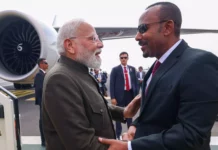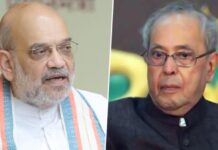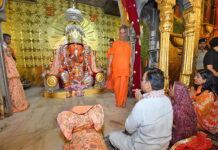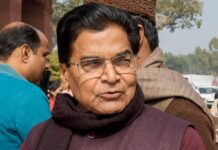NEW DELHI: Nepal’s Prime Minister Sher Bahadur Deuba’s official visit to India from April 1 to 3 reflects Delhi and Kathmandu’s old friendship which flourished back in 1950 when both countries came together and signed the India-Nepal Treaty of Peace and Friendship.
This treaty was the beginning of everlasting peace and friendship between the two governments and their unique relationship of friendship can be characterized by open borders and deep-rooted people-to-people contacts of kinship and culture. According to the data from 2014, around 6,00,000 Indians are living or domiciled in Nepal while nearly eight million Nepalese citizens live and work in India.
During the 18th South Asian Association for Regional Cooperation (SAARC) Summit, India emphasized developing the regional hydro potential, grid connectivity and gas pipelines. Earlier, in 1971, both the countries had a Power Exchange Agreement to meet the power requirements in the border areas of the two countries, taking advantage of each other’s transmission infrastructure.
Not only in electricity, but in the time of coronavirus also when the entire world was struggling to get the vaccination for their people, India handed over vaccines to Nepal under grants assistance in sync with its ‘Neighbourhood First’ policy. Under the ‘Vaccine Maitri’ initiative, India had gifted around one million COVID-19 vaccine doses to Nepal. Nepal has also placed an order for two million vaccines with Pune-based pharmaceutical company Serum Institute of India (SII).
Further, India and Nepal are working together to build the Kathmandu-Raxaul railway line, which was signed in the year 2021, that would link Kathmandu with the Indian border town of Raxaul in Bihar. The Buddhist circuit train already in place covers the important destinations connected to the life of Buddha in India and Nepal over eight days.
New Delhi not only help India to grow economically or in energy regions but also assist during the earthquake. Earlier, India had pledged one billion US dollars as support for earthquake reconstruction; one-fourth of it was committed as grant assistance to be utilized for health, cultural heritage, housing and education sectors.
Even back in 2015, when a 7.8 magnitude earthquake hit Nepal, the Indian Government dispatched National Disaster Response Force (NDRF) teams and special aircraft with rescue and relief materials to Nepal. India also sent a medical team for helping innocent lives in Nepal. India helped in restoring three power sub-stations in Kathmandu valley.
Over the last five years and more, India has substantially fulfilled its commitment under various priority sectors identified by the Government of Nepal. Recently, India’s External Affairs Minister S Jaishankar has mentioned that the reconstruction of 50,000 owner-driven houses in Gorkha and Nuwakot districts under Indian assistance has been completed.
The projects in the remaining sectors of health, education and culture are also in progress. It is important to note that India is funding the reconstruction of 70 schools and a library, 132 health facilities and 28 cultural heritage sector projects in various earthquake-affected districts of Nepal.
With Indian assistance, many infrastructural projects are either being undertaken or nearing completion or have been concluded in Nepal, with the primary objective of bolstering trade by way of improved connectivity.
Approximately INR 5,253 crore worth of road projects are being (or have been) implemented, which would benefit India and Nepal. A category of projects that deserves special mention is road connectivity between the two countries.
The projects include a 144 km road from Rupaidiha to Barabanki (INR 1,338 crore), a 184 km road from Sonauli to Gorakhpur (approximately INR 570 crore), the Fobesganj-Jogbani road as well as a road linking Piprakodi to Raxaul (INR 429 crore) and 10 other roads costing around INR 500 crore.
India’s “Act East Policy” and “First neighborhood policy” play an important role in making this friendship stronger. The connectivity has assumed greater significance with the formation of regional and sub-regional groupings like BBIN and BIMSTEC. The physical infrastructure being built with Indian assistance will help Nepal boost her trade in the region.
Meanwhile, Prime Minister Deuba during his official visit to India is also scheduled to visit Varanasi where he will visit the holy Kashi Vishwanath temple and a Nepali temple also known as ‘Shri Samrajeswar Pashupatinath Mahadev Mandir’. The Nepali temple dedicated to Lord Shiva was envisaged by Nepali King Rana Bahadur Shah who was exiled to the city from 1800 to 1804 A.D.
The temple belongs to the Nepal government and is one of the most famous temples of the holy city, Varanasi. (ANI)







